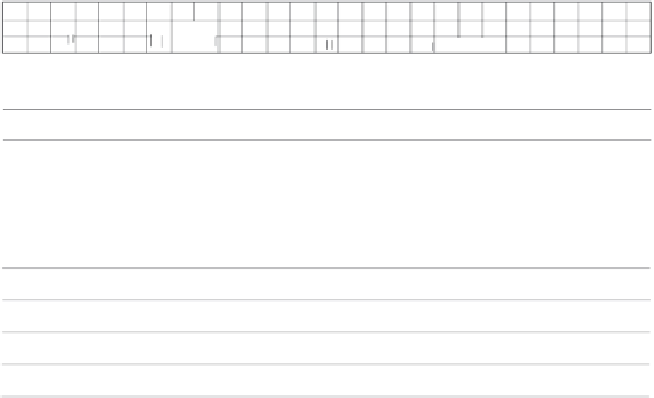Environmental Engineering Reference
In-Depth Information
1956 1957 1958
Oct.
Nov. Dec.
Jan.
Feb. Mar. Apr. May.
Jun.
Jul.
Aug. Sep.
Oct.
Nov. Dec.
Jan. Feb. Mar. Apr. May.
Jun.
Jul.
Aug. Sep.
Oct.
Nov.Dec.
Test plot
dry
1.0
0.5
Test plot dry
0.0
0
Infiltration from test plot
Below 150 ft
0
−
25 ft
25
−
50 ft
50
−
75 ft
1
2
100
−
150 ft
75
100 ft
−
3
Compaction of depth zones
(depth (ft) below land surface)
0
150-ft bench mark
2
4
6
8
10
12
Subsidence, of bench marks
FIGURE 10.25
Subsidence measured by benchmarks, test pond B, west side of San Joaquin, California. (From Curtin, G.,
Geology, Seismicity and Environmental Impact, Special Publication
Association Engineering, Geology, University
Publishers, Los Angles, 1973. With permission.)
with a high clay content tended initially to swell rather than collapse. During field testing,
the benchmarks on the surface first rose upon inundation as the montmorillonite swelled;
soon subsidence overcame the swelling and the benchmarks moved downward. A labora-
tory consolidation test curve showing soil collapse upon the addition of water is given in
Figure 10.26.
In describing the soils in western Fresno County, Bull (1964) notes that maximum sub-
sidence occurs where the clay amounts to about 12% of solids; below 5% there is little sub-
sidence and above 30% the clay swells.
Residual Soils
Collapse has been reported to occur in residual soils derived from granite in South Africa
and northern Rhodesia (Brink and Kantey, 1961), and from sandstone and basalt in Brazil
(Vargas, 1972).
Porous clays of Brazil
(argila porosa) occur intermittently in an area of hundreds of square
kilometers ranging through the central portions of the states of Sao Paulo, Parana, and
Santa Catarina. The terrain consists of rolling savannah and the annual rainfall is about
1200mm (47 in.), distributed primarily during the months of December, January, and
February. The remaining 9 months are relatively dry. Derived from Permian sandstone,
Triassic basalt, and Tertiary sediments, the soils are generally clayey. Typical gradation
curves are given in
Figure 10.27,
and plasticity index ranges in
Figure 10.28.
The upper zone of these formations, to depths of 4 to 8 m, typically yields low SPT values,
ranging from 0 to 4 blows/ft; void ratios of 1.3 to 2.0 are common. Below the “soft” (dry)
upper zone a hard crust is often found. A typical boring log is given in
Figure 10.29;
it is to
be noted that groundwater was not encountered, which is the normal condition. Some lab-
oratory test data are also included in the figure. A boring log profile giving percent water
content, plasticity index, liquid limit, gradation, and porosity is also given in
Figure 7.7.






